When designing a minimalist space, it can be easy to lean more into muted, neutral color palettes to create a calm and clean ambiance. However, you can still make your space feel special and relaxing even with some splashes of color.
“Color is a way to uplift our spirits and change the dynamic of our spaces,” Abbey Stark, the interior design leader for IKEA U.S, a leader in minimalist design, tells The Spruce.
We asked minimalist designers for their best tips for mixing in colors that are both approachable and (very) doable. Read on to see how you can bring in your favorite colors to transform your dull minimalist space into a modern, playful abode.
Figure Out Your Favorite Shades
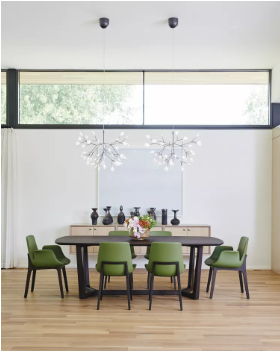
Before you get started, it’s essential to have an idea about what you like and dislike when it comes to certain colors. Ask yourself some of the following questions:
- How does this color make me feel?
- What kind of mood do I want to set?
- Will I like this color in the future or is it temporary?
- Will this color complement the overall style of my home?
Look around your favorite home decor shops or scroll through home sites to gain inspiration on how you want your space to look with more color. This process will help you streamline your decisions and give you a better idea of what you’re looking for in terms of paint and decor.
Fill Your Blank Canvas
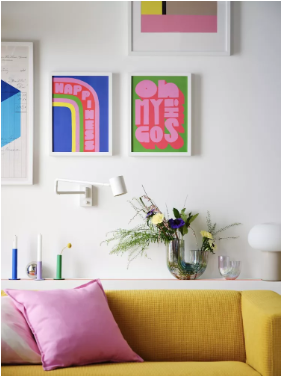
Envision your minimalist space as a blank canvas that can be filled with colorful furnishings to make an expressive statement. If the majority of the interiors, like the walls and floors, are neutral colors, this is a great opportunity to find pieces that speak to you and add them in.
Stark advises people to embrace color in their space and find excitement in choosing a palette that makes them happy.
“I like to think of homes as gallery spaces,” Stark says. “Setting the foundation with all-white walls and allowing the home furnishings to tell the story. These adored pieces are what make a home.”
Stark recommends selecting a bold-colored sofa or armchair and aiming for a slipcovered option, so you can easily swap it out whenever you get tired of the current selection for an easy transformation.
Determine the purpose of each room and then think of home pieces that would help emphasize the room’s intention. For example, if there’s a reading nook in your living room, consider bringing in a colorful lamp to set the literary mood.
Aim for Accents
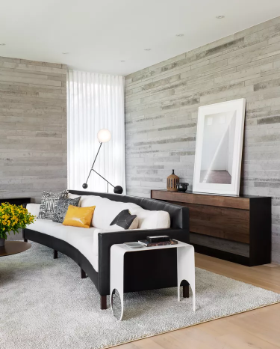
The best way to gradually introduce color into your minimalist abode is by bringing in small decor accents that’ll make a statement in subtle ways.
“We think of using color as an accent and in a more structured way,” Liu says. “It’s often a small piece or item relative to the size of the room, but when done in the right way, a little color can pack a big punch.”
Stark suggests bringing in bursts of color through statement artwork.
“Keep it simple with white frames on a white wall,” Stark explains. “This allows the art to pop.”
Another inexpensive way to introduce some color into your living spaces is through textiles. Stark recommends finding some colorful pillows, patterned curtains, or even an area rug to start.
“Play with a large colorful area rug as the all-encompassing piece that grounds the space while letting the neutral furniture shine,” Stark says.
Be Cohesive
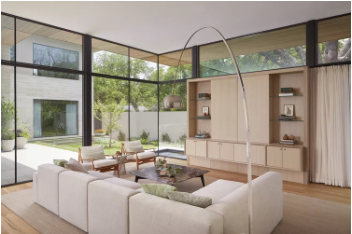
It can be intimidating to know where to start when choosing a palette, but it’s important to remind yourself that you don’t have to choose a ton of colors, but rather a few that you love. To tie in your entire home, find one or two colors that make you feel good and weave them through your entire space through furnishings, wood trims, or decor accents to achieve a cohesive look.
Repeating the same colors through your entire space will create a more structured look and still feel grounded. Don’t limit yourself to one hue of the color, but have fun mixing and matching different shades of the same color and various textures to create some depth.
“Thread the color throughout various rooms to give the entire house a cohesive and unified look,” Liu says. “It can change tones or hues but the actual color should remain consistent throughout the living room, library, dining room, and into the bedrooms.”
Stark agrees and explains that tonal looks are a beautiful and simple way to welcome color that feels both modern and minimal. Layering will help elevate the color you’re using in an effortless way.
Paint Away
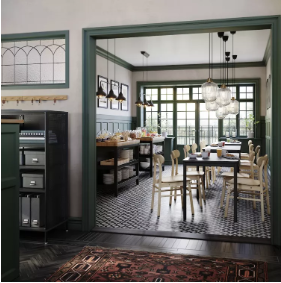
If you’re looking to go bigger and bolder, consider painting some parts of a room to give an uplifted look. Whether it’s an accent wall, a door, some trim, or the floors, this will help maximize the pop of color against the other neutral features.
“Paint is an easy and affordable way to change the ordinary into something special,” Stark says. “Painting wood floors with an unexpected finish like turquoise not only modernizes the room but sets the space apart.”
Aim for untraditional paint colors if you’re planning on painting any woodwork because it will give any traditional space a modern flair, Stark explains.
You can also set your furniture pieces apart by giving them a color refresh. Whether it’s painting a kitchen island a striking blue or an unused cabinet a charming pink, you have the opportunity to breathe new life into any outdated furnishings. If you love antiquing or shopping for secondhand decor, this can be a fun and creative way to repurpose an item into something that fits your personal style or space.
Any questions please feel free to ask me through Andrew@sinotxj.com
Post time: Oct-27-2023


